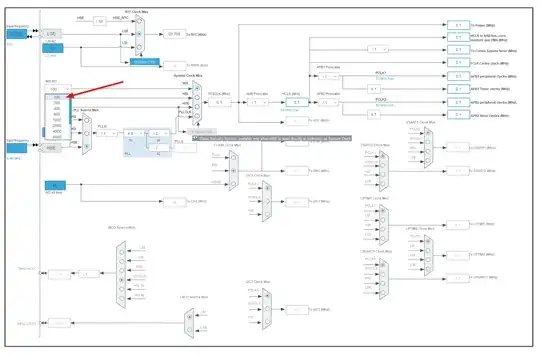If you require to do some things related to frequency or time done with better than the datasheet mentioned 0.25% precision for LSE trimmed operation at the system clock frequency, then you can't use LSE trimmed RC for timebase and that's really it then and must use a HSE crystal.
So yes, if you anyway need a LSE crystal, maybe for actual timekeeping, and don't have much requirements for MCU core speed precision or tolerance, then you can use LSE crystal.
You are only considering the usage of clock sources on one specific family of MCUs, but still asking in general if standard high frequency crystals like 8 MHz are better in some regard than 32768 Hz RTC crystals.
And yes they are in many regard.
32768 Hz RTC crystals are large tuning fork crystals and they are very sensitive mechanically and electrically as they are so low power.
They generally do not provide high accuracy over a wide temperature range. As the startup time depends on frequency these start up slowly until they oscillate stably.
A typical crystal of say 8 MHz is much smaller, easier to design and get oscillating. They have better temperature stability over a wide range and start up faster.
Generally, for LSE crystal, the basic option is only a 32768 Hz watch crystal because it's so widely available. From that it may be difficult to synthesize any frequency you want with enough precision unless fractional PLLs are used. The PLL also needs to work with very low input frequency if you want multiple tens or hundreds of MHz out.
Which is why in STM32s you name use the RTC crystal to just calibrating an internal RC oscillator to be near the nominal and you use the RC oscillator output for PLL - not the RTC crystal directly.
And not all STM32 can do that.
Sometimes, for stable short term (i.e. jitter free) and stable long term operation (drift free) you simply use a normal crystal.
Of course if your application can work with RTC trimmed RC oscillator then that's fine, but don't expect other applications to be able to work like that. For example Ethernet and USB are buses that require very strict frequency and tolerance.
And since the LSE can be used to calibrate the MSI only up to +/- 0.25%, it simply is out of range for USB and Ethernet.
But the STM32L4 does not have Ethernet so that's not a problem, and the USB it has goes only up to 12 Mbps and already uses other tricks to keep itself syncronized by using the USB packet SOF symbols which even allows for crystal-less USB operation.

Maybe jitter is the thing? But that's the point of my question. I'm wondering if there are any real hard parameters that can be shown and compared, that would show that high frequency quartz is better at something.
– Manx Dec 06 '23 at 03:02